
Floating shelves are increasingly popular in modern home décor. Unlike traditional shelving units, floating shelves are mounted directly onto the wall, giving the illusion that they are “floating” on the wall surface. The simple and minimal design makes them ideal for small living rooms with limited space. When styled beautifully, floating shelves can become a stunning focal point in your living room.
Are Floating Shelves in Living Rooms Out of Style?
While some may see floating shelves as a trend that will eventually fade, they have become a mainstay in contemporary interior design. The versatility and simplicity of floating shelves allow them to fit seamlessly into many different aesthetics and styles.
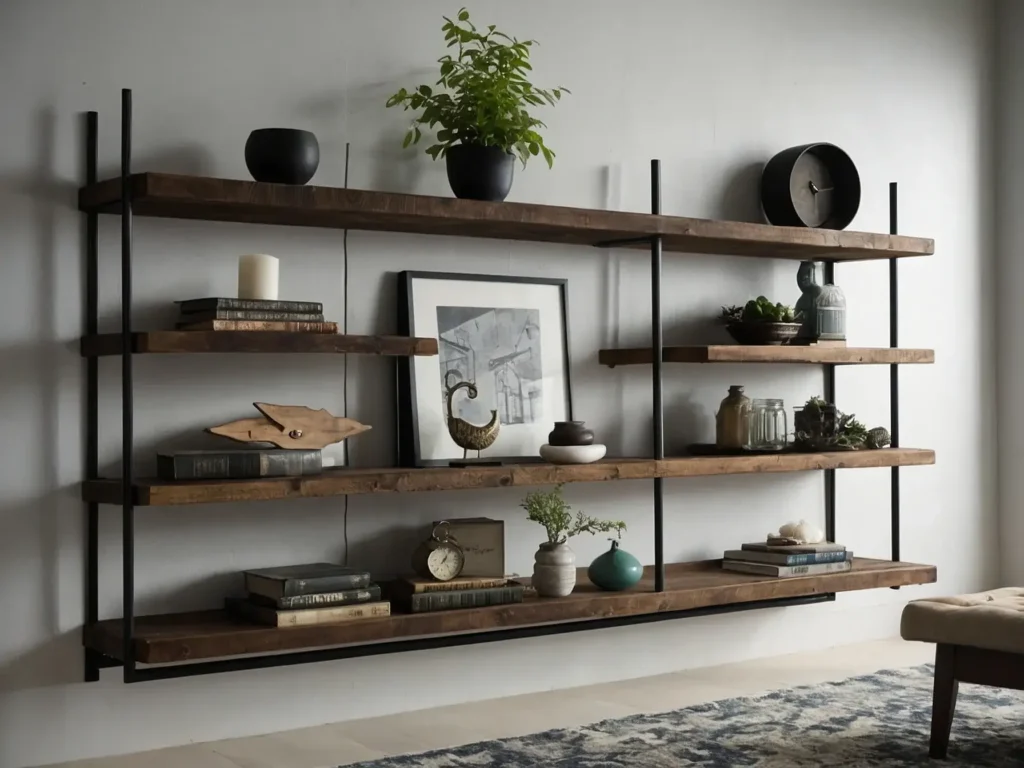
Floating shelves work beautifully in living rooms decorated in current popular styles like modern farmhouse, industrial, bohemian, and Scandinavian designs. Their minimalist form suits the clean lines and practicality emphasized in these styles. Shelves can be made from wood, metal, or concrete to complement the overall aesthetic.
Rather than looking outdated, the simplicity of floating shelves makes them timeless. They can be adapted to suit changing trends by switching up the styling. Floating shelves will likely maintain popularity as people continue embracing minimalism and prioritising multifunctional furniture.
Floating Shelves Ideas Around TV
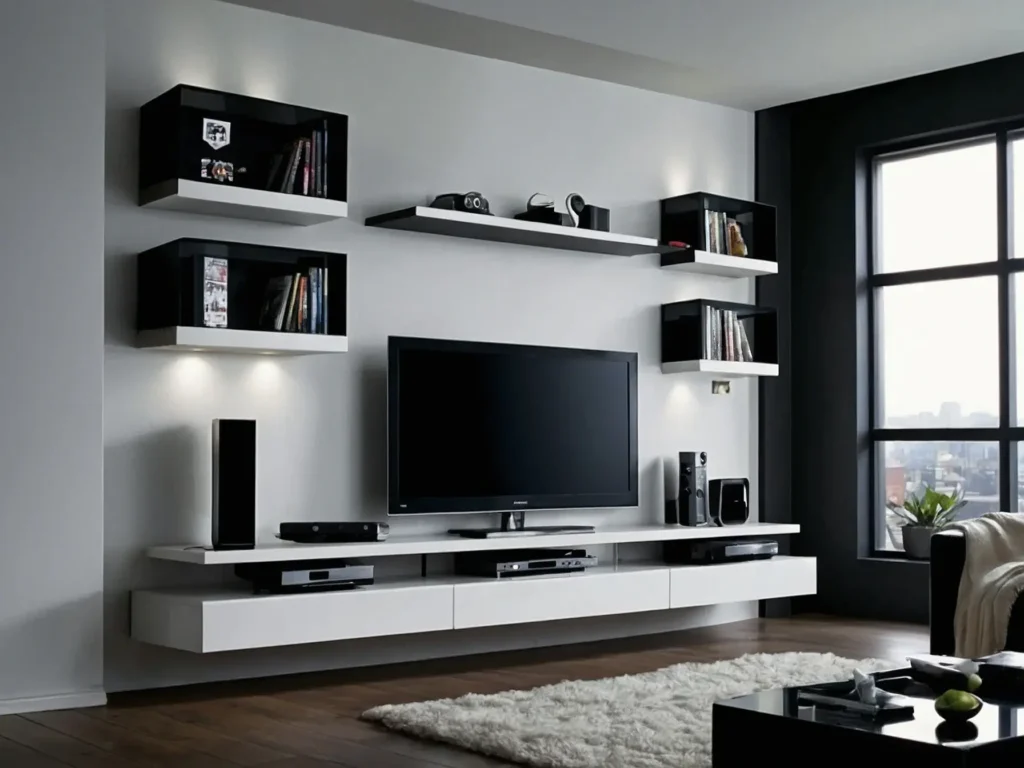
One of the most popular spots to install floating shelves in a living room is around the TV. This helps declutter media components and cords while adding style.
Shelves can be placed at various heights and widths to accommodate different media players, gaming consoles, streaming devices, and other electronics. Narrow shelves are useful for discretely holding streaming sticks and hiding unsightly wires. Wider shelves can store gaming consoles or media players.
Floating shelves with cable management holes are a great option to organize and conceal wires neatly. Shelves can also be used to attractively display decorative items while still housing media components behind them.
Creating a whole floating shelf media unit instead of a single shelf makes for a beautiful feature wall. Mix different sized floating shelves and position them asymmetrically for visual interest.
Floating Shelves Ideas for Bedrooms and Kitchens
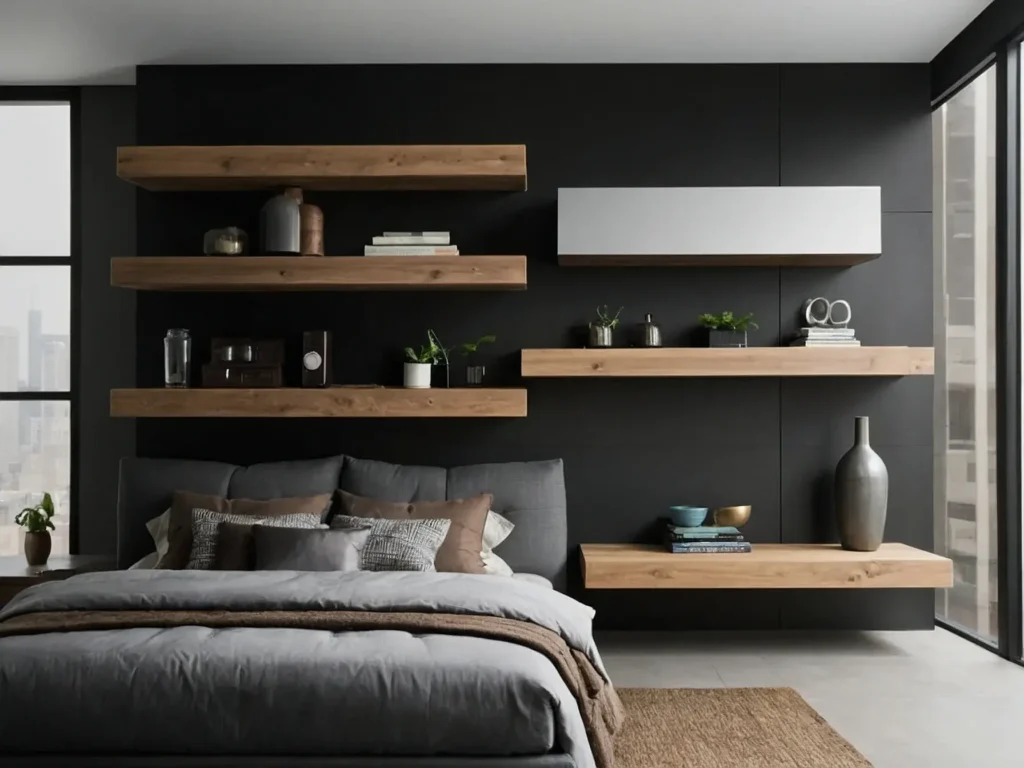
While this article focuses on living rooms, floating shelves are versatile enough to work in any house room. The same principles and ideas apply.
In a bedroom, floating shelves are perfect as bedside tables to hold lamps, books, and other personal items. They can also provide display space above a dresser or desk.
In the kitchen, floating shelves make excellent spice racks or display shelves for cookbooks, decorative bowls, and colorful glassware. Position them near the stove for easy access while cooking.
How Deep Should Floating Shelves Be in a Living Room?
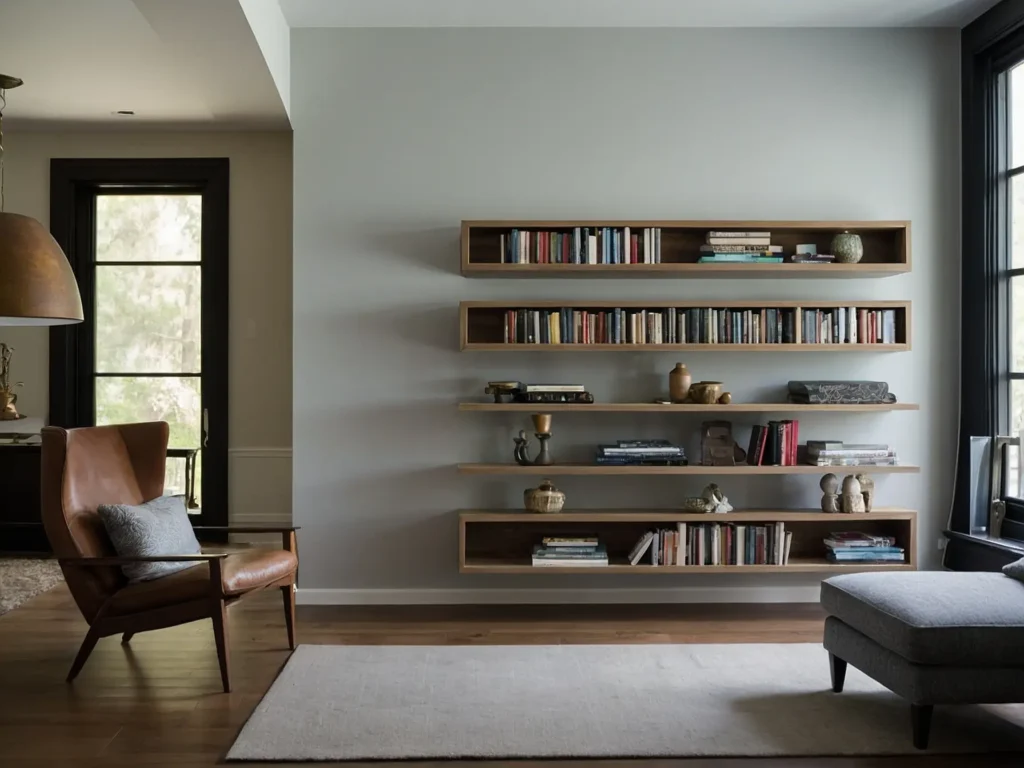
When deciding on shelf depth, there are a few factors to consider:
- The items you want to display – Deeper shelves around 12 inches can hold decorative boxes and baskets. Shallower shelves of 4-6 inches are great for books or artwork.
- The overall look – Deeper shelves make more of a statement, while shallow shelves have a lighter, more minimal appearance.
- The size of the wall – Shallower shelves prevent the space from feeling too crowded on a smaller wall. Deeper shelves better suit a larger wall.
- Viewing angle – If the shelves will be viewed from further away, deeper shelves show off contents better. Shallower works best when viewed up close.
Finding the right balance depends on your priorities. Average shelf depth is commonly between 8-12 inches. This offers both form and function for many living rooms.
Making Floating Shelves Look Expensive
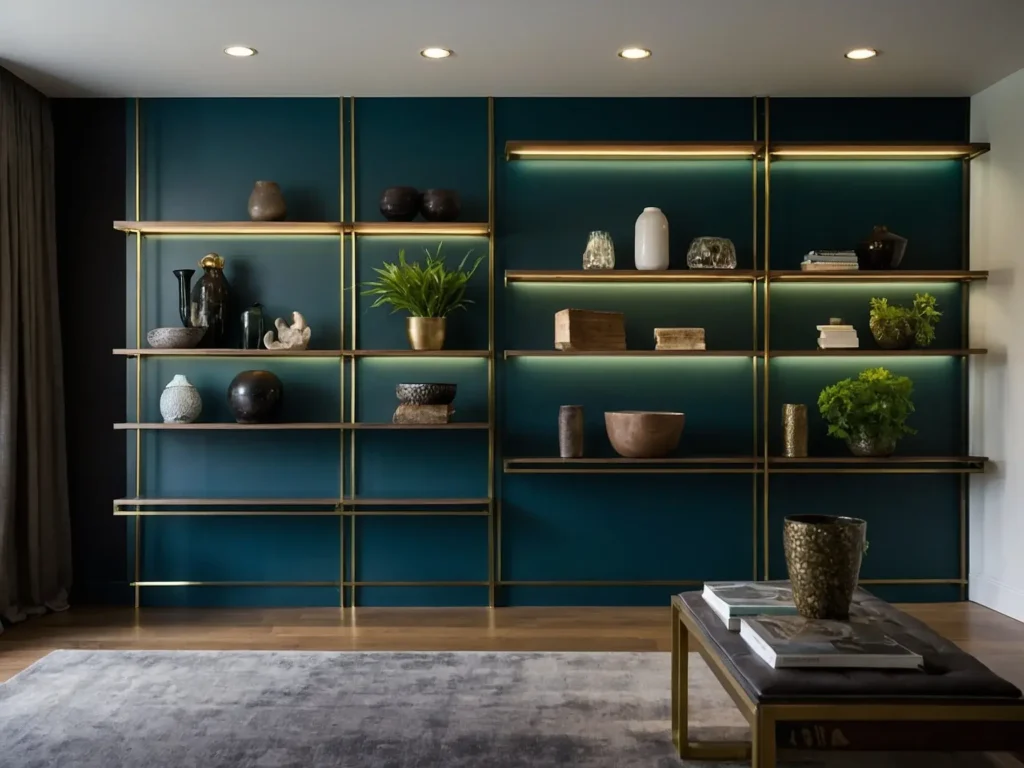
Floating shelves from luxury materials like solid wood or marble automatically look more upscale. But even with more affordable materials, the right details can make them look luxe:
- Choose solid natural wood – Oak, walnut, teak all look expensive. Avoid engineered woods like particleboard.
- Use metal accents – Iron, brass, gold hardware, brackets, or edges elevate the look.
- Add LED lighting – Install sleek LED light strips to illuminate and accent shelves.
- Consider glass shelving – Tinted or smoked glass looks sleek and modern.
- Use high-end hardware – Opt for matte black or brass shelf brackets and mounting hardware.
- Choose a luxury paint color – Deep blue, emerald green, and charcoal gray all feel rich.
- Install it properly – Perfectly leveled and flush shelves look custom-built.
- Style minimally – Avoid clutter. Simple, well-curated shelves look high-end.
How to Style a Floating Shelf in a Living Room
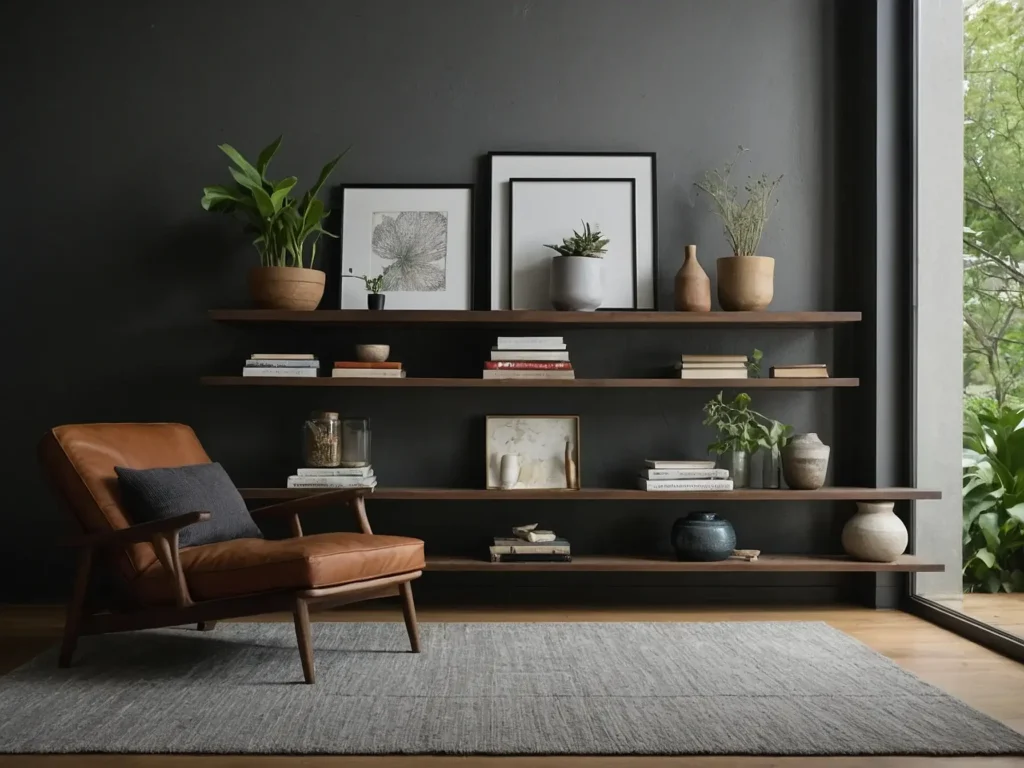
When styling floating shelves, a curated, minimal approach looks best. Follow these tips for styling shelves that are functional and beautiful:
Edit down items to just your favorites – Resist overloading the shelves. Include only your best décor items and books.
Vary heights and sizes – Mix tall and short items, stacking books horizontally and vertically.
Repeat colors – Tie things together using tones pulled from your overall color scheme.
Incorporate plants or flowers – Add life with vases, potted plants, or small bud vases.
Use books – Fill in empty spaces with books. Stack horizontally with bindings facing out.
Angling adds interest – Place some items at an angle rather than flat against the wall.
Light it up – Install discreet lighting or a pretty lamp to illuminate shelving.
Balance with space – Don’t overcrowd. Negative space is important for a clean look.
Bring in personal touches – Show off travel mementos, photos, or handmade ceramics for personality.
What to Put on Floating Shelves in a Living Room
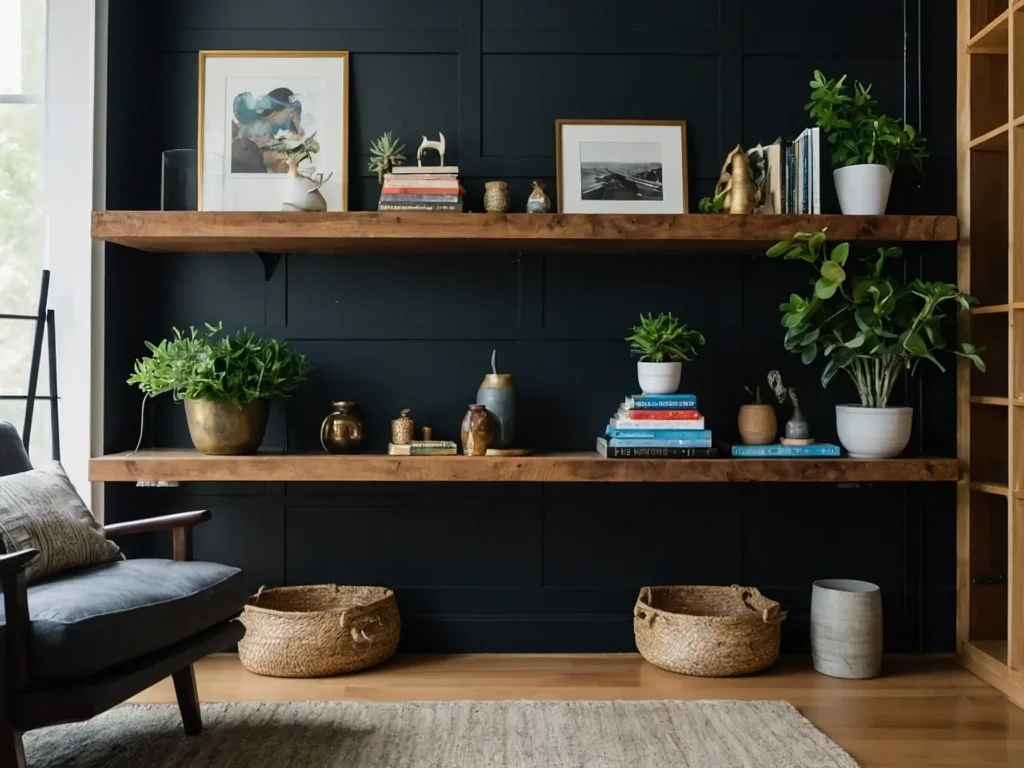
When deciding what items to place on floating shelves, the options are truly endless. Any decorative object in your home can find a perfect home on a stylish shelf. Here are some ideas:
- Framed photos
- Art, prints, paintings
- Houseplants or small potted succulents
- Stacked books, magazines, or journals
- Candles and candle holders
- Small sculptures or unique decorative items
- Collected seashells, stones, coral
- Vases, bud vases, or bowls
- Globes or terrariums
- Small ceramic or wooden boxes
- Framed mirrors or hanging wall mirrors
- Bookends, small baskets, or trays for corralling items
- Lighting like small table lamps or sconces
The interior design style you are working with will help guide what objects work best. Just be sure to curate the items you display and avoid cluttering the shelves with too many random knickknacks.
Material Considerations: Wood vs. Metal vs. Glass

There are pros and cons to each material option for floating shelves. Consider the overall look you want to achieve:
Wood – Natural warmth, available in many stains and finishes. Can span longer lengths without support. Prone to splitting and warping.
Metal – Sleek, modern look in black, gold, brass, etc. Sturdy but may need reinforced support. Prone to scratches.
Glass – Light and airy. Glass shelves impart an open, spacious feel. Risk of breaking. Shelves need thick glass.
Concrete – Industrial vibe. Heavy material limits lengthy spans without support. Can be brittle and prone to cracking.
Acrylic – Good lighter-weight option to glass. Can look plasticky if not high-quality. Available in colors.
Match the shelves to the rest of your decor. Wood works in many home styles, while metal and glass skew modern. Concrete makes an industrial statement.
Incorporating Storage Solutions
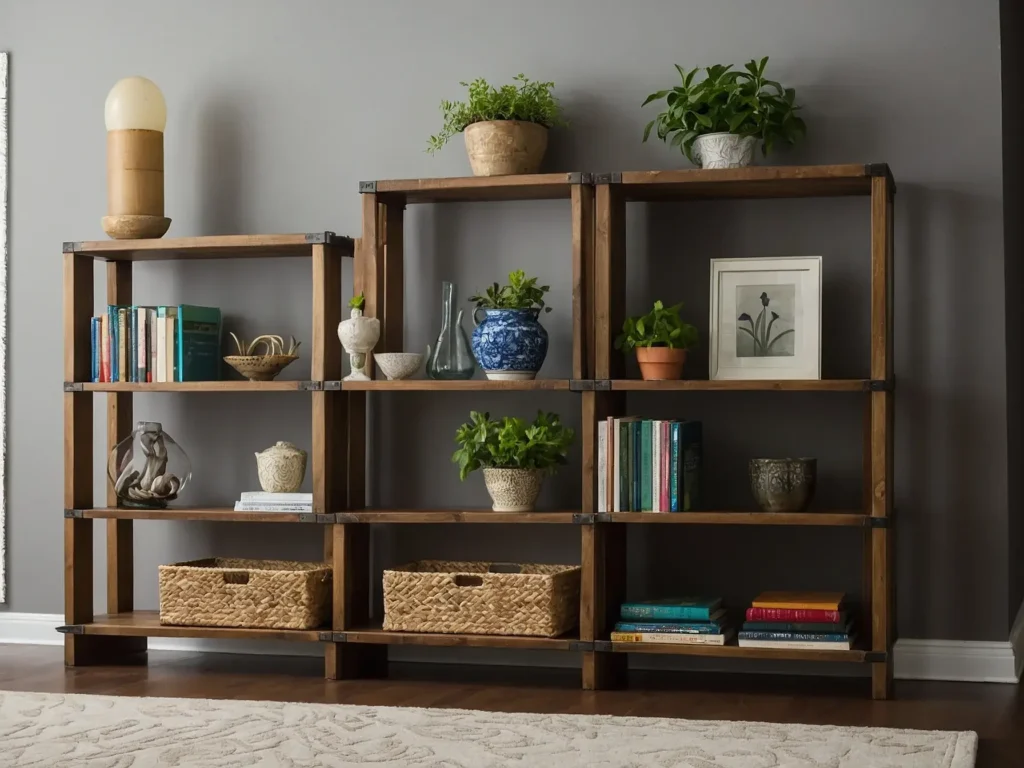
While floating shelves are typically more decorative than functional, you can incorporate discreet storage solutions:
- Baskets or bins – Woven baskets or fabric bins are a pretty home for clutter. Use lidded bins to conceal items fully.
- Boxes – Small wooden crates or cubbies can corral odds and ends.
- Bookends – Bookends keep books upright and from toppling over.
- Risers – Clear acrylic risers lift and display special items. Risers come in varied heights.
- Railings – Install slim metal or wood rails along the shelf edge to prevent items sliding off.
- Drawers – Floating shelves with built-in drawers offer discreet enclosed storage.
- Cabinets – Enclosed cabinets with doors provide ample hidden storage space.
You can organize items on shelves with creative storage solutions while maintaining a pretty, styled look.
Floating Shelves Above Furniture

Another clever spot to install floating shelves is right above living room furniture. The space above a sofa, sideboard, media console, or chair is often underutilized. Floating shelves are a great way to take advantage of this empty wall space.
Shelves above seating can display potted plants, photos, or art above eye-level. It creates a nice backdrop when looking at the seating. Mount the shelves slightly wider than the furniture below for a cohesive look. This makes it look like one intentional unit.
Over sideboards or media consoles, floating shelves add beautiful vertical interest. Mix some open shelves with enclosed cabinet shelves for display and discreet storage. Position them to align with the scale of the furniture below.
When mounting above furniture, ensure shelves are high enough to leave sufficient head clearance. At minimum, allow 8-12 inches of clearance above a sofa, chair or sideboard. Over a taller media console, you can likely go a bit lower.
Also consider the distance from the back of the furniture to the wall. Don’t mount shelves so shallow that objects will easily get knocked off. Extend the shelf size slightly below the sides of the furniture piece for optimal proportions.
Layering and Positioning Floating Shelves
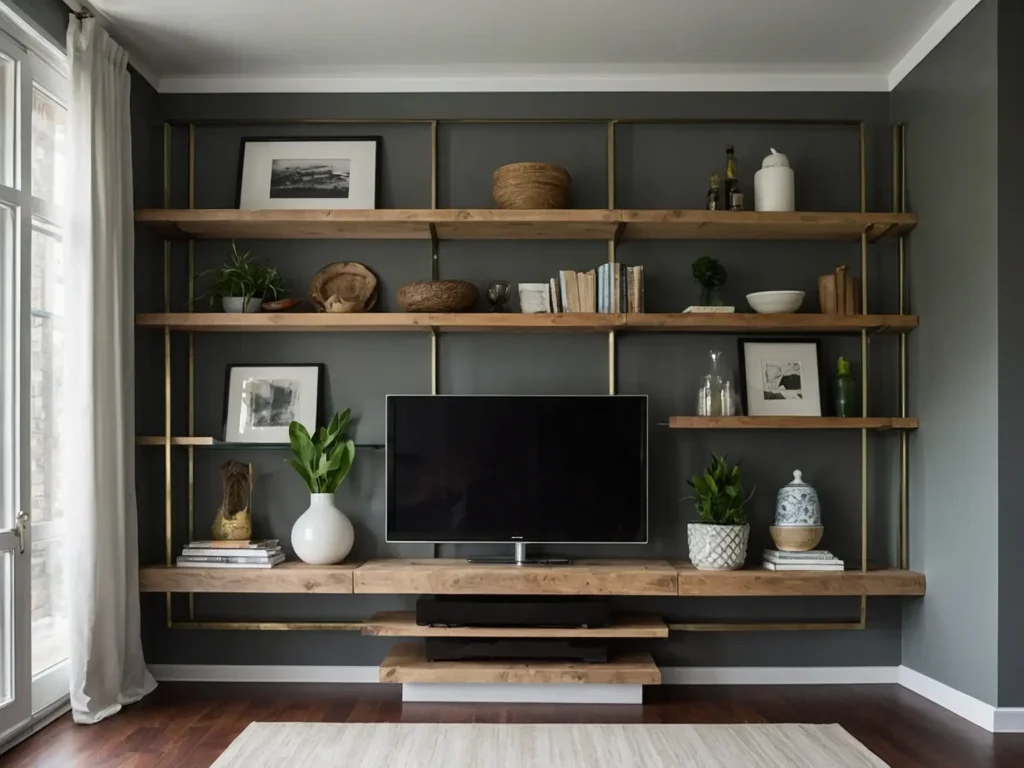
Rather than just a single shelf, layering two or three shelves makes for a more substantial display and beautiful focal point. Consider these tips when designing a layered floating shelf display:
- Vary shelf sizes – Combine deeper and shallower shelves for more dimension.
- Overlap shelves – Let the shelves extend partially in front of each other rather than stacking neatly in a column.
- Vary shapes – Incorporate some asymmetrically shaped or curved shelves.
- Play with angles – Tilt some shelves for interest rather than keeping all rectangular and straight.
- Repeat materials or colors – All wood or black metal shelves tie the look together.
- Consider practical spacing – Leave enough space between shelves to use them. Around 10 inches of clearance is ideal.
When it comes to positioning your floating shelves, you can follow general design guidelines:
- Install closer to eye level for easy visibility and access.
- Placing shelves off-center looks more organic and natural.
- Align shelves relative to surrounding architecture or furniture.
But don’t be afraid to break the rules! Angling or staggering shelves in an asymmetrical or random pattern can be eye-catching. Let your creativity guide you.
Lighting Your Floating Shelves
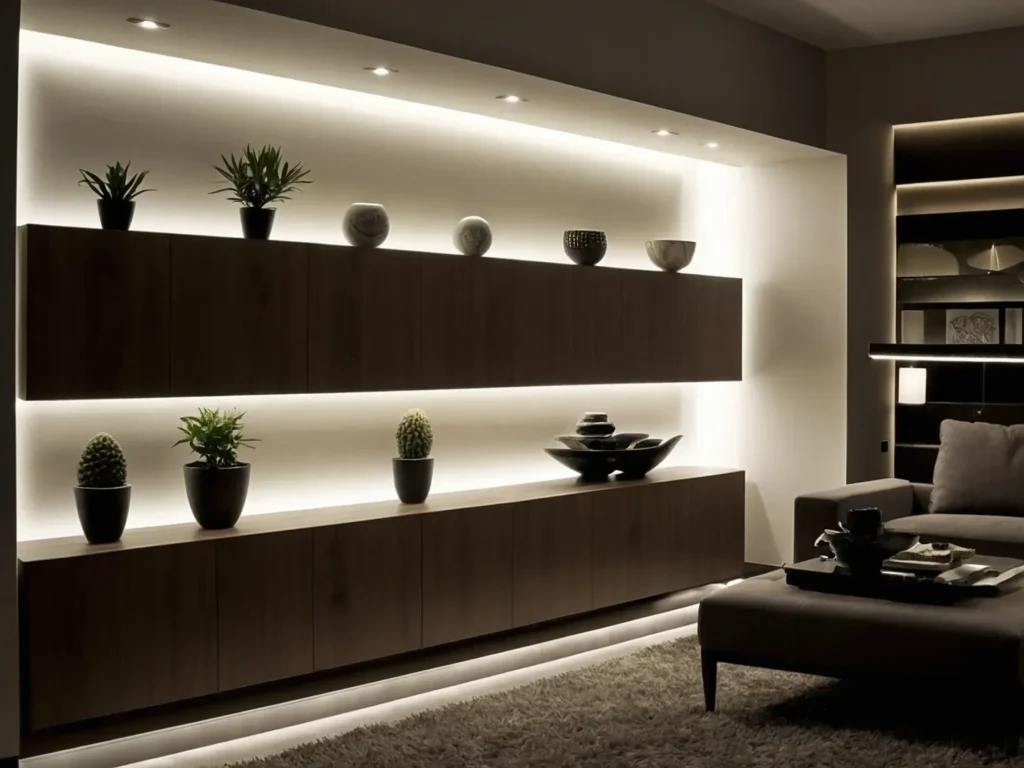
Proper lighting can make or break your floating shelf display. Illumination serves both a practical and aesthetic purpose. Follow these lighting tips:
Accent shelving – Install discreet LED strip lights along the undersides or sides of shelves. This adds a glow and accent.
Use sconces – Wall sconces positioned above or near the shelves provide ambient lighting.
LED cabinet lighting – Battery-operated LED lights can be placed inside enclosed cabinets for a soft glow.
Table lamps – Stylish table lamps work nicely on some shelves to illuminate the display.
Overhead lighting – Make sure general overhead lighting hits the shelves. Add fixtures if needed.
Natural light – Consider available sunlight and position shelves to use this free light.
A combination of accent, task, and natural lighting is ideal. Properly illuminating your shelves helps showcase all your beautiful items.
Conclusion
Floating shelves offer a chic and modern way to add storage and style to living room walls. Their simplicity enables them to blend into a variety of decorating aesthetics. With the right shelf depth, high-quality materials, thoughtful styling, and strategic lighting, floating shelves can become the stunning focal point of your living room.
Get creative with shapes, angles, heights and configurations. Layer shelves, incorporate discreet storage solutions, and curate your most beloved items for display. Keep the look minimalist and uncluttered. floating shelves are endlessly adaptable, so don’t be afraid to experiment until you find the perfect arrangement suited to your space and taste.
